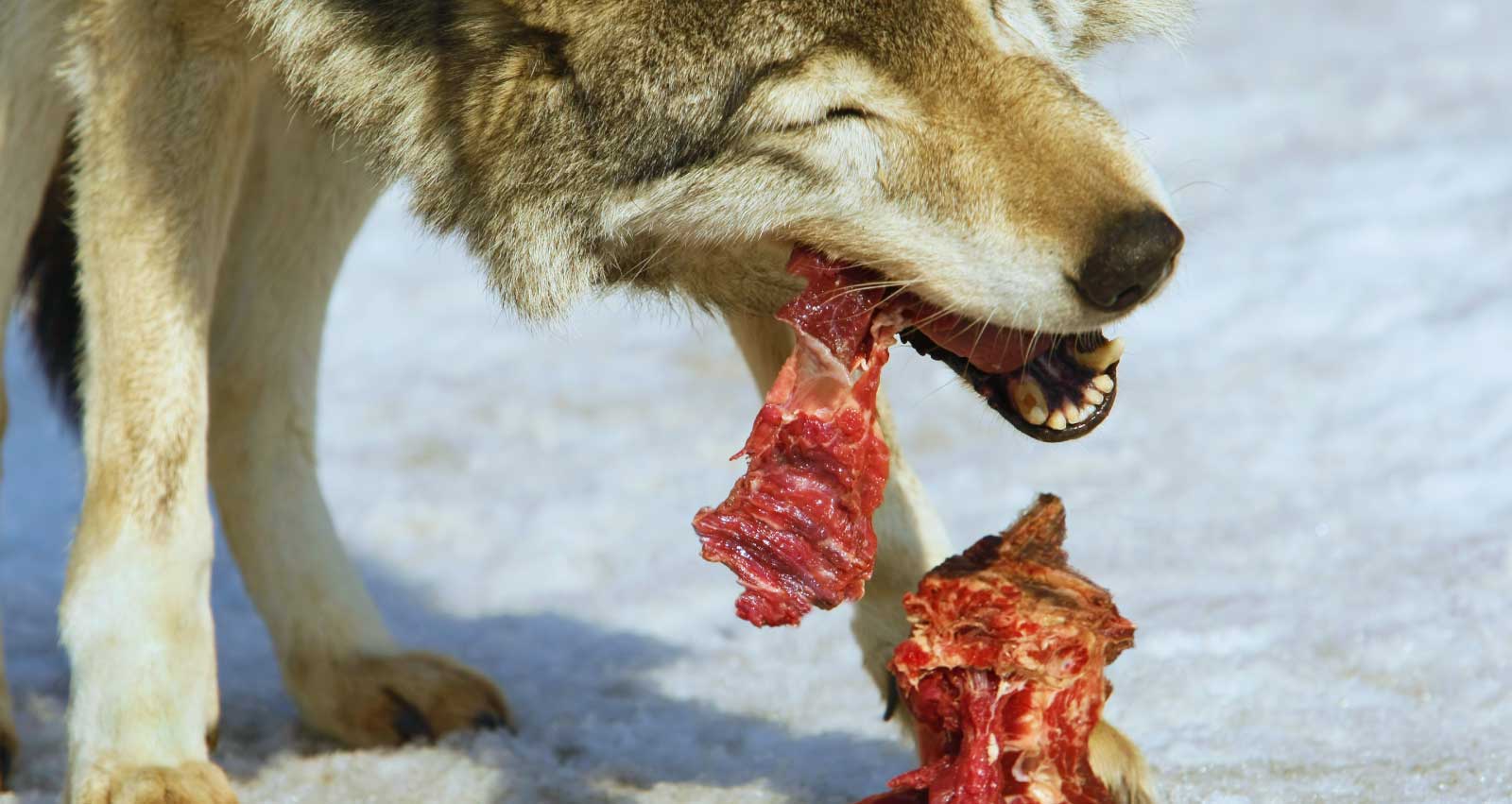Can I Feed My Dog 100% Meat?

If you’re new to the idea of preparing fresh food for your dog, you may be wondering, “Well, if dogs are descendants of wolves, and wolves in the wild survive off of meat, then why don’t we just feed our dogs a diet of 100% meat? Why do they need veggies added at all? Isn’t that unnatural?”
The answer is simple. Dogs are not wolves, and don’t have the same environmental conditions and genetic predispositions as normal wolves. Dogs have been domesticated for over 10,000 years, and their diet has varied depending on the climate, location, and cultural inclinations of the people they have been raised around. We have also done amazing things in breeding our modern-day dogs to look drastically different from their wolf cousins, and a proper diet should also take into consideration the body structure and specific nutritional needs of each individual animal.
History
The modern dog is a descendent of the wolf, which crossed with the ancient Aureus dog in many different climates, conditions, and parts of the world. The evolutionary transition from the wolf to the Chihuahua is due to selective breeding and selective feeding. It’s hard to imagine a pack of Chihuahuas bringing down caribou in the wilds of Canada! In fact, the Chihuahua was a sacred dog to the Toltecs and Mayans and historically enjoyed a “people food” diet of vegetables, corn, and a little meat.
When you think about it, it makes sense that a Chihuahua is going to have a different diet than a German Shepherd or other large dogs. As dedicated working dogs, German Shepherds would need more meat or protein than a Chihuahua, or any other kind of “toy breed.” Protein is needed to restore body cells, facilitate healing, and to help regenerate the biggest organs of the body: the muscles. One way to gauge what would be appropriate for your dog to eat is to examine your dog’s morphology and historical evolution.
If your dog fits these characteristics, then a diet higher in protein is probably correct (and vice versa).
- Large head and/or strong jaws
- Large body mass
- Actively working – hunting dogs, working dogs, herding dogs, etc.
An All-Meat Diet in the Wild?
Did you know that Mastiffs were historically used in war, and these dogs evolved into the large sizes we see today because they ate a 100% raw meat (BARF) diet? They still absorbed some nutritional properties from plants, by way of ingesting the intestines of game animals (like deer), which contained digested vegetables and grains, but got their bulk from the large amount of protein they ate.
This brings us to the next point: there is no such a thing as an all-meat diet in the wild. Wild wolves inevitably digest a fair amount of plant matter too – as they benefit from the plant diet of the prey animals they hunt.
Other Factors to Consider for a Balanced Diet
Another consideration when determining protein amounts in the diet is your dog’s age and activity level. As your dog ages and becomes less active, it is better to reduce protein. A 20-30% protein range (by volume) would be ideal for an older dog 8 years and up. Aging dogs require better-quality proteins with high biologic values (which do not stress the kidneys), such as eggs, fermented dairy products, organ meats, fresh tuna, and chicken breast and lamb, along with an assortment of cooked grains and vegetables.
The activity level of your dog, condition, age, breed, temperament, and the climate of where you live are some of the factors to consider when formulating a diet for your pet. Sick or weak animals may need more energy and thus require more protein. In other cases, some dogs may be ingesting too much protein, which can sometimes be indicated by increased aggression. Diet plays a very important role in all aspects of your dog’s health, and even the simplest change can create significant differences in behavior and health.
Hints for Feeding During Winter Weather
Traditional Oriental Herbal Medicine theory emphasizes the medicinal properties of food. When weather is cold, damp, and windy, the diet needs to be adjusted to help the body improve resistance to infections, improve digestion and metabolism, and manage the temperate changes in the environment.
Warming foods are recommended to eat during times of cold, windy, and wet winter weather. Some of these foods include:
- Lamb
- Chicken
- Shrimp
- Ginger
- Basil
- Cayenne
- Oats
- Parsnip
- Parsley
- Green beans
To learn more about how to formulate a balanced, breed-appropriate diet, please check out my new nutrition book Fresh Food & Ancient Wisdom: Preparing Healthy & Balanced Meals for Your Dogs. Or, email us to arrange a diet consultation, and I will prepare a diet plan specifically for your dog’s age, breed type, condition, lifestyle, and needs.
